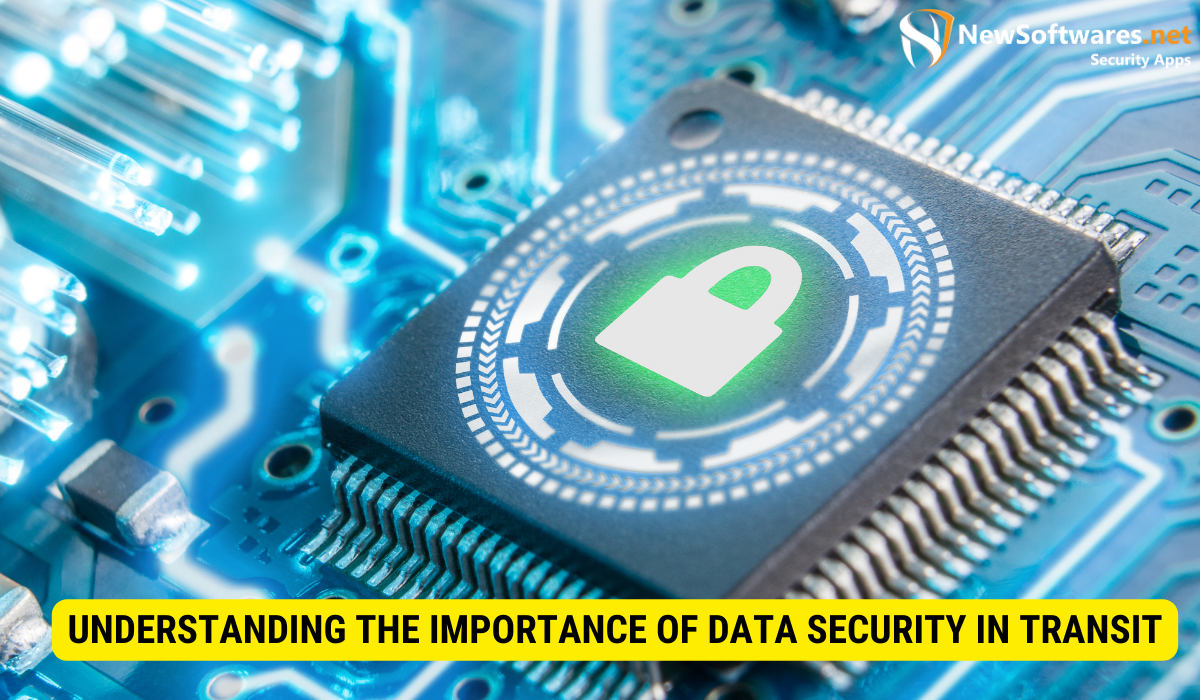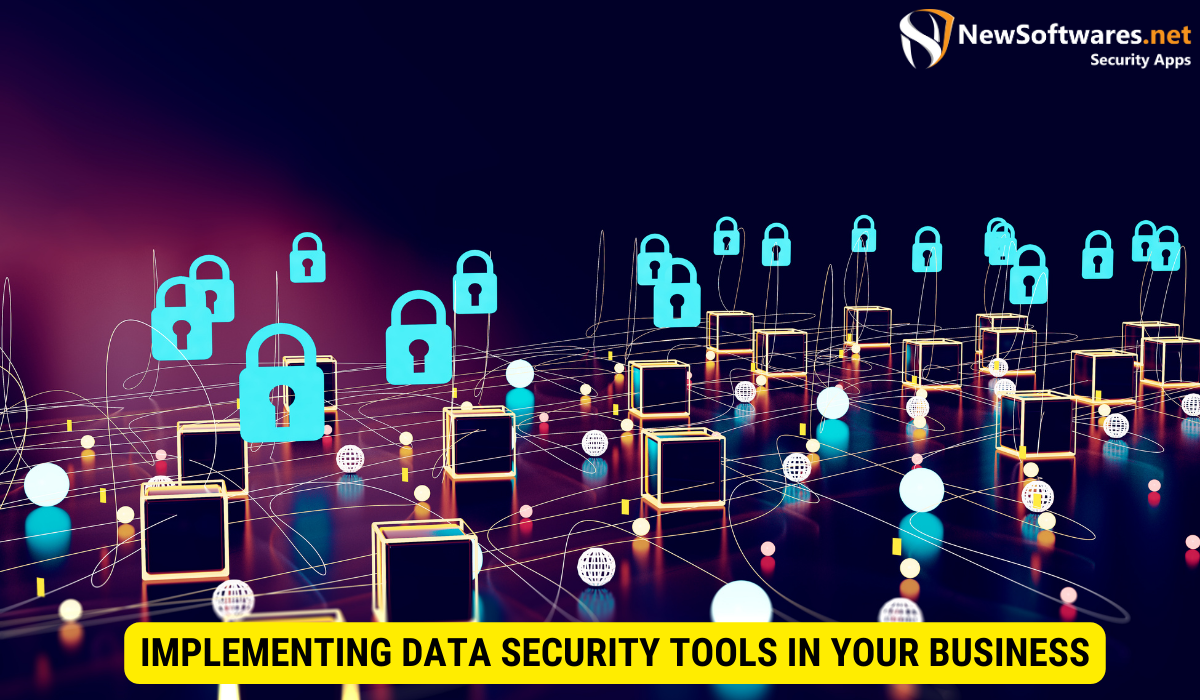In today’s highly interconnected world, the security of data during transit is of utmost importance for companies across industries. From financial transactions to confidential customer information, organizations must take proactive measures to safeguard their data from unauthorized access and potential breaches. I will explore the essential tools that businesses can employ to ensure the secure transmission of data, understand the risks of unsecured data transmission, delve into key features of effective data security tools, review top data security tools for businesses, and provide guidance on implementing these tools in your organization.
Understanding the Importance of Data Security in Transit

As data travels between systems, networks, and devices, it becomes vulnerable to attacks by malicious actors. The potential risks associated with unsecured data transmission are significant and can have severe consequences for businesses. By prioritizing data security in transit, companies can mitigate these risks and maintain the confidentiality, integrity, and availability of their data.
The Risks of Unsecured Data Transmission
Unsecured data transmission poses various risks, including:
- Data Interception: Without appropriate security measures in place, data can be intercepted by unauthorized individuals, leading to data breaches and potential misuse.
- Data Modification: Hackers can tamper with the data being transmitted, altering its content, or introducing malicious code that can compromise system integrity.
- Data Loss: In the absence of robust security protocols, data loss can occur during transit, leading to financial and reputational damage.
- Reputation Damage: Security breaches can erode customer trust and damage a company’s reputation, resulting in loss of business and market share.
- Regulatory Noncompliance: Businesses that fail to protect data during transit may face legal and regulatory repercussions, such as noncompliance with data protection laws.
These risks highlight the critical need for businesses to implement strong security measures to safeguard their data during transit. Data interception, in particular, is a significant concern as it can lead to unauthorized access to sensitive information. This can have severe consequences, including financial loss, legal liabilities, and damage to the company’s reputation.
Data modification is another risk that businesses must address. Hackers can manipulate the data being transmitted, altering its content or introducing malicious code. This can compromise the integrity of the system and potentially lead to further security breaches or system failures. It is essential for companies to implement measures such as encryption and digital signatures to detect and prevent data tampering.
Data loss during transit is a significant threat that can result in severe financial and reputational damage. Without robust security protocols in place, data can be lost or corrupted, leading to disruptions in business operations and potential legal liabilities. Companies must prioritize data backup and recovery strategies to mitigate the impact of data loss and ensure business continuity.
Reputation damage is a consequence of security breaches that cannot be underestimated. When customers lose trust in a company’s ability to protect their data, they are likely to take their business elsewhere. This can result in a loss of revenue, market share, and long-term damage to the company’s brand. Implementing strong data security measures during transit is crucial for maintaining customer trust and loyalty.
Furthermore, regulatory noncompliance is a significant risk for businesses that fail to protect data during transit. Data protection laws and regulations are becoming increasingly stringent, and companies that do not comply may face legal and financial consequences. By prioritizing data security in transit, businesses can ensure compliance with relevant regulations and avoid costly penalties.
The Role of Data Security in Business Continuity
Data security during transit is an integral part of business continuity planning. By ensuring the secure transmission of data, companies can maintain their operations even in the face of disruptions or cyberattacks. It allows for seamless communication, collaboration, and the preservation of critical business processes, thereby safeguarding productivity and customer satisfaction.
In today’s interconnected world, businesses rely heavily on the secure transmission of data to carry out their day-to-day operations. Whether it is transmitting financial information, customer data, or sensitive business documents, the integrity and confidentiality of the data must be protected. By implementing robust data security measures during transit, companies can minimize the risk of disruptions and ensure the continuity of their operations.
Business continuity planning involves identifying potential risks and implementing strategies to mitigate them. Data security in transit is a crucial aspect of this planning, as it addresses the risks associated with data transmission. By implementing measures such as encryption, secure protocols, and regular security audits, companies can minimize the risk of data breaches and ensure the uninterrupted flow of information.
Seamless communication and collaboration are essential for business continuity. When data is transmitted securely, employees can exchange information without fear of interception or unauthorized access. This enables teams to work together effectively, regardless of their physical location, and ensures that critical business processes can continue uninterrupted.
Moreover, data security during transit is vital for preserving customer satisfaction. Customers expect their data to be handled securely, and any breach of trust can have severe consequences for a company’s reputation. By prioritizing data security in transit, businesses can demonstrate their commitment to protecting customer information and maintain a positive relationship with their clients.
In conclusion, data security in transit is of utmost importance for businesses in today’s digital landscape. The risks associated with unsecured data transmission can have severe consequences, including data breaches, financial loss, reputational damage, and regulatory noncompliance. By implementing robust security measures and prioritizing data security during transit, companies can mitigate these risks and ensure the confidentiality, integrity, and availability of their data. Additionally, data security in transit plays a critical role in business continuity planning, enabling seamless communication, collaboration, and the preservation of critical business processes.
Key Features of Effective Data Security Tools
When selecting data security tools for your organization, several key features are essential to consider. These features will determine the level of protection and the ease of integration into your existing infrastructure.
Encryption: The First Line of Defense
Encryption is a fundamental feature of any effective data security tool. It involves converting data into an unreadable format using encryption algorithms and special keys. Only authorized parties with the correct decryption keys can decipher and access the data. Strong encryption ensures that even if intercepted, the data remains confidential and secure.
Authentication and Access Control Measures
To prevent unauthorized access to data during transit, robust authentication and access control measures must be in place. Two-factor authentication, biometric authentication, and secure login credentials help ensure that only authorized individuals can access sensitive information. Access control measures, such as role-based access permissions, further enhance data security by limiting access to specific individuals or groups within an organization.
Network Security Protocols and Firewalls
Implementing proper network security protocols and firewalls is crucial for protecting data during transit. Firewalls act as a barrier between internal and external networks, monitoring and controlling incoming and outgoing traffic. Network security protocols, such as Transport Layer Security (TLS) and Secure Sockets Layer (SSL), provide encrypted communication channels to secure data during transmission over networks.
Reviewing Top Data Security Tools for Businesses
There are several data security tools available in the market, specifically designed to secure data during transit. Let’s explore some of the top tools that businesses can leverage:
VPNs for Secure Data Transit
A Virtual Private Network (VPN) encrypts data traffic between two endpoints, creating a secure and private connection. VPNs are particularly useful when employees need to access company resources remotely. They provide a secure tunnel for data transmission, protecting it from interception and unauthorized access.
Secure File Transfer Protocol (SFTP) Tools
SFTP tools offer secure file transfer capabilities over the internet. Using encryption and authentication mechanisms, SFTP ensures the secure transmission of files, preventing unauthorized interception or modification. These tools are ideal for organizations that frequently transfer sensitive data with external parties.
Data Loss Prevention (DLP) Software
DLP software helps prevent unauthorized data disclosure by monitoring data flow and enforcing security policies. It identifies and classifies sensitive data, applies access controls, and detects and mitigates potential data breaches. DLP software enables organizations to proactively protect their data by preventing accidental or intentional data leaks during transit.
Implementing Data Security Tools in Your Business

When implementing data security tools in your organization, it is crucial to follow a systematic approach to ensure success and maximize the effectiveness of these tools.
Assessing Your Business’s Data Security Needs
Begin by conducting a comprehensive assessment of your business’s data security needs. Identify the types of data you need to protect, the potential risks, and the existing security gaps. This assessment will serve as a foundation for selecting the appropriate data security tools that align with your organization’s requirements.
Choosing the Right Tools for Your Business
Consider factors such as scalability, compatibility with existing infrastructure, ease of use, and cost-effectiveness when choosing the right data security tools for your business. Evaluate multiple options, conduct thorough vendor assessments, and seek recommendations from experts to make an informed decision.
Training Staff on Data Security Best Practices
Invest in training and awareness programs to educate employees about data security best practices. Ensure that employees understand the importance of secure data transmission and are familiar with the tools and protocols in place. Continuous training will help reinforce a culture of data security within your organization.
Key Takeaways
- Securing data during transit is crucial for businesses to protect their sensitive information from unauthorized access and potential breaches.
- Data security tools, such as encryption, authentication measures, and network security protocols, play a vital role in ensuring the secure transmission of data.
- VPNs, SFTP tools, and DLP software are among the top data security tools that businesses can leverage to enhance data security during transit.
- A systematic approach to implementing data security tools, including assessing business needs, choosing the right tools, and training staff, is essential for successful implementation.
- By prioritizing data security during transit, companies can mitigate risks, safeguard their reputation, and maintain business continuity in the face of cyber threats.
Frequently Asked Questions (FAQs)
Q1: Why is data security during transit important for businesses?
Data security during transit is vital for businesses to protect sensitive information from unauthorized access, potential breaches, and reputation damage. It helps ensure the confidentiality, integrity, and availability of data, maintaining business operations and customer trust.
Q2: What are some risks associated with unsecured data transmission?
Unsecured data transmission poses risks such as data interception, data modification, data loss, reputation damage, and regulatory noncompliance. These risks can lead to financial and legal consequences for businesses.
Q3: What are the key features of effective data security tools?
Effective data security tools should include encryption for confidentiality, authentication and access control measures to prevent unauthorized access, and network security protocols and firewalls to protect data during transmission over networks.
Q4: How can businesses choose the right data security tools?
Businesses should consider factors such as scalability, compatibility, ease of use, and cost-effectiveness when choosing data security tools. They should conduct assessments, evaluate multiple options, and seek expert recommendations.
Q5: What is the role of data security in business continuity?
Data security in transit is a crucial component of business continuity planning. It ensures seamless communication, collaboration, and the preservation of critical business processes, even during disruptions or cyberattacks.
Conclusion
Securing data during transit is an essential aspect of safeguarding an organization’s sensitive information. By understanding the risks associated with unsecured data transmission and implementing the right tools, businesses can protect themselves from data breaches, reputation damage, and regulatory noncompliance. Encryption, authentication measures, and network security protocols are key features to consider when selecting data security tools. By adopting a systematic approach to implementation and investing in employee training, businesses can enhance data security during transit and ensure business continuity, enabling them to thrive in today’s digital landscape.
